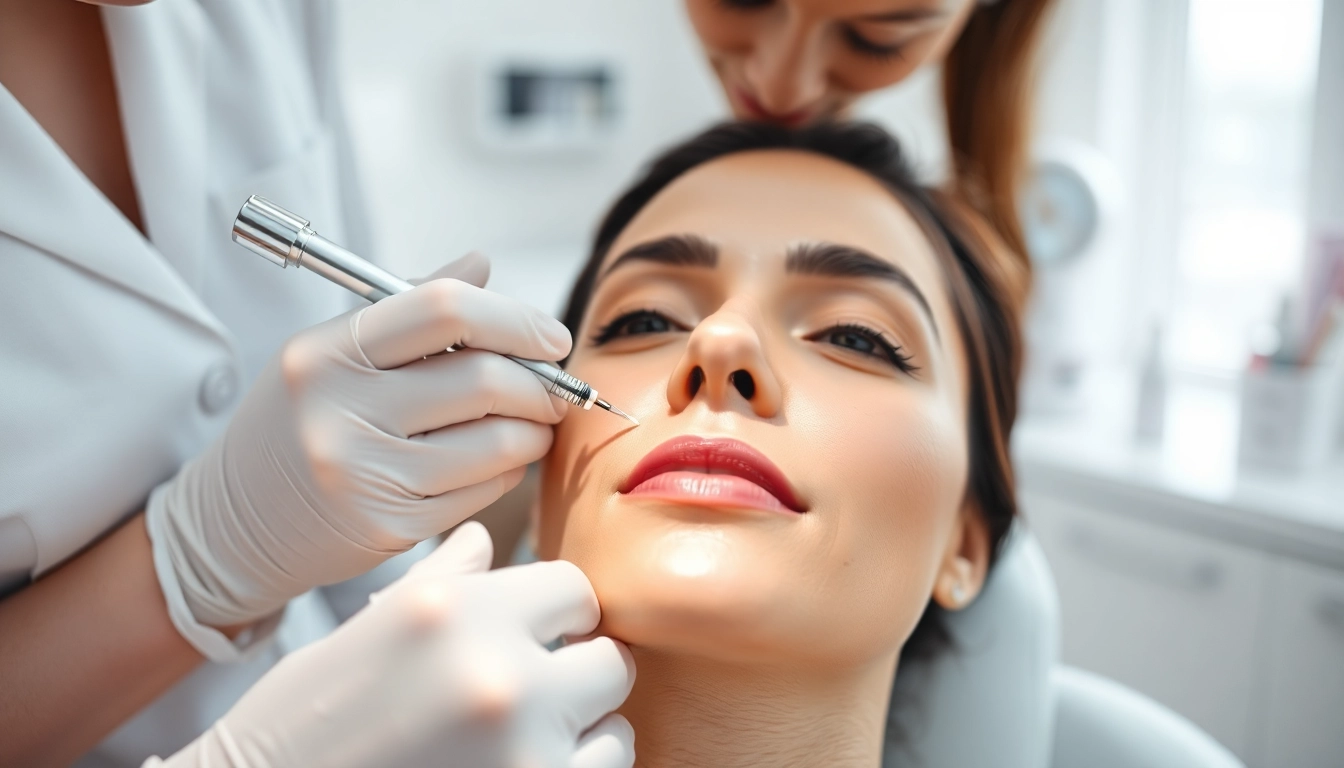Understanding Face Fillers
What Are Face Fillers?
Face fillers, also known as dermal fillers, are injectable substances designed to smooth out wrinkles, add volume to areas of the face, and enhance facial contours. Typically made from hyaluronic acid (HA), collagen, or other synthetic materials, these fillers can restore lost volume due to aging or environmental factors. They are a popular choice for those seeking cosmetic enhancements without the need for surgical interventions, making them a desirable option for individuals looking for a non-invasive solution for facial rejuvenation.
Types of Face Fillers Available
There are several types of face fillers available, each with unique properties and suitable for different concerns:
- Hyaluronic Acid Fillers: Popular due to their natural appearance and reversible effects, these fillers hydrate and plump the skin. Brands like Juvéderm and Restylane are widely used and known for their effectiveness.
- Calcium Hydroxylapatite Fillers: These thicker fillers, such as Radiesse, stimulate collagen production and are often used for deeper wrinkles and volume restoration.
- Poly-L-lactic Acid Fillers: Known for gradual results, fillers like Sculptra stimulate collagen growth over time, making them ideal for those looking for long-lasting improvements.
- Autologous Fat Injections: Derived from the patient’s own body, this method involves liposuction to harvest fat, which is then injected into the face. This technique offers a natural solution but requires more extensive procedures.
Benefits of Using Face Fillers
The benefits of using face fillers are vast and can be tailored to individual needs. Some of the primary advantages include:
- Instant Results: The effects of fillers are visible immediately after treatment.
- Minimal Downtime: Patients can typically return to their daily activities right after the procedure.
- Non-Invasive: Face fillers are non-surgical, posing fewer risks than traditional cosmetic surgeries.
- Customizable Treatments: Practitioners can tailor the treatment to address specific facial areas, ensuring personalized results.
Choosing a Qualified Provider
What to Look For in a Practitioner
Choosing the right provider for your face fillers is crucial for achieving safe and effective results. Here are key factors to consider:
- Qualifications: Look for licensed professionals, such as board-certified dermatologists or plastic surgeons, who have specific training in injectable treatments.
- Experience: A practitioner with a robust portfolio and good recommendations from previous clients is often a safer choice.
- Facility Accreditation: Ensure the treatment is performed in a certified clinic or medical spa, which adheres to safety protocols.
Questions to Ask During Consultations
During your consultation, consider asking the following questions to gauge the practitioner’s expertise:
- What brands of fillers do you offer, and what are their specific benefits?
- Can you show before-and-after photos of previous patients?
- What are the potential side effects and how do you handle complications?
- How do you personalize the treatment for each patient?
Understanding Certifications and Expertise
Before committing to a procedure, verify the practitioner’s qualifications and certifications. Look for memberships in professional organizations, such as the American Academy of Dermatology or the American Society of Plastic Surgeons, which signify ongoing education and adherence to industry standards. These credentials ensure that your provider is knowledgeable about the latest techniques and safety protocols in cosmetic injectables.
The Procedure: What to Expect
Pre-Procedure Consultation
The pre-procedure consultation is an essential step in the face filler journey. This meeting allows the practitioner to assess your facial anatomy, discuss aesthetic goals, and determine the most suitable products for your needs. Additionally, discussing your medical history, allergies, and any medications you are taking will help mitigate risks and tailor the treatment accordingly.
During the Face Filler Injection
On the day of the procedure, the area will be cleansed, and a topical anesthetic may be applied to minimize discomfort. The provider will then inject small amounts of the filler into targeted areas using a fine needle. Techniques may vary based on the product used and the treatment area. The procedure typically takes less than an hour, and the results are instantly visible.
Post-Procedure Care and Recovery
After receiving face fillers, patients should follow specific aftercare instructions to optimize results and reduce side effects. This may include avoiding strenuous activity, minimizing sun exposure, and steering clear of blood thinners to reduce the risk of bruising. Most patients experience mild swelling or tenderness, which usually subsides within a few days.
Cost Considerations
Average Prices for Face Fillers
The cost of face fillers can vary significantly based on factors such as the type of filler used, the quantity of product required, and the geographic location of the provider. On average, patients can expect to pay between $500 to $2,000 per syringe. Premium brands and specialized treatments may cost more due to their advanced formulations and techniques.
Factors Affecting Cost
Several key factors can influence the cost of facial fillers:
- Product Type: Some fillers are more expensive due to their formulation and duration of effectiveness.
- Provider Experience: More experienced practitioners may charge higher fees for their expertise.
- Location: Clinics in urban areas or affluent regions often have higher price points due to increased demand and overhead costs.
Insurance and Financing Options
Since face fillers are considered cosmetic procedures, they are typically not covered by insurance. However, many clinics offer financing options or payment plans to help patients afford their treatment. It is beneficial to inquire about these options during your consultation to ease the financial burden.
Frequently Asked Questions
What Are Common Side Effects?
Common side effects following face filler injections can include temporary redness, swelling, bruising, or tenderness at the injection site. These effects are usually mild and subside within a few days. Serious side effects are rare but can occur, which is why it is crucial to choose a qualified and experienced practitioner.
How Long Do Results Last?
The longevity of face filler results can vary depending on the type of filler used, the area treated, and individual factors such as metabolism. On average, hyaluronic acid fillers last between 6 to 12 months, while other types, like poly-L-lactic acid fillers, can yield results that last up to two years. Regular touch-ups can help maintain desired effects.
Can I Combine Fillers with Other Treatments?
Yes, many patients combine fillers with other cosmetic treatments, such as Botox, laser treatments, or chemical peels, to enhance overall facial rejuvenation. It’s essential to discuss your goals with your practitioner, who can recommend a comprehensive treatment plan that aligns with your aesthetic aspirations.
In summary, if you are searching for face fillers near me, understanding the types, benefits, and procedures involved will empower you to make informed choices. Consulting with a qualified provider ensures that you will achieve the best possible results while minimizing risks. Embrace the journey to a more youthful appearance with the knowledge and confidence you gain along the way.



